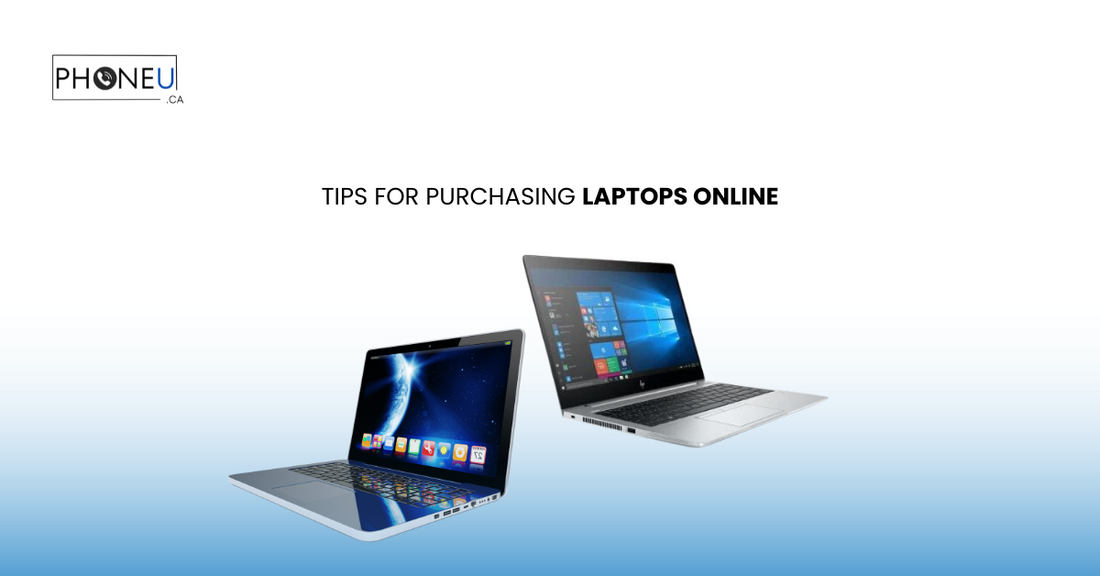
Tips for Purchasing Laptops Online
Share

Introduction
The convenience of online shopping has extended to the realm of purchasing laptops, with more consumers opting to explore their options on digital platforms. However, with the plethora of choices available, it's crucial to approach online laptop purchases with careful consideration and informed decision-making.
Researching Laptops
Before diving into the vast sea of online laptop listings, take the time to research and understand your needs. Consider factors such as intended usage, preferred specifications, and desired features. This groundwork will guide you towards making a more informed decision when browsing through available options.
Setting a Budget
One of the first steps in purchasing a laptop online is determining your budget. Assess your financial constraints and allocate a realistic amount for your purchase. Keep in mind that the initial cost of the laptop may not be the only expense; consider additional costs such as accessories, software, and extended warranties.
Choosing the Right Brand
Brand reputation plays a significant role in the reliability and performance of a laptop. Prioritize brands with a history of producing quality products and offering excellent customer support. Research warranty policies and service options to ensure a smooth ownership experience.
Deciding on Laptop Type
Laptops come in various forms, from traditional clamshell designs to versatile 2-in-1 convertibles. Consider your usage requirements and preferences when choosing between form factors. Determine whether performance or portability is more important to you, and select an operating system that aligns with your needs.
Assessing Technical Specifications
When browsing through laptop listings online, pay close attention to technical specifications such as the processor, RAM, storage capacity, and graphics card (if applicable). These components directly impact the laptop's performance and capabilities, so choose configurations that match your intended usage.
Considering Connectivity Options
Evaluate the available connectivity options on the laptop, including ports, wireless capabilities, and compatibility with accessories. Ensure that the laptop has the necessary ports for your peripherals and supports the latest wireless standards for seamless connectivity.
Evaluating Display Quality
The laptop's display is your primary interface with the device, so prioritize factors such as screen size, resolution, panel type, and color accuracy. Opt for a display that meets your visual preferences and usage requirements, whether it's for multimedia consumption, productivity tasks, or creative work.
Examining Build Quality and Design
Beyond specifications, consider the laptop's build quality, materials, and design aesthetics. Choose a laptop that not only looks appealing but also feels sturdy and durable. Ergonomic features such as keyboard comfort and port placement can significantly impact your user experience.
Checking for Additional Features
Look for additional features that enhance the usability and functionality of the laptop, such as a backlit keyboard, touchscreen capability, or biometric authentication options. These features can add convenience and versatility to your computing experience.
Assessing Seller Credibility
Before making a purchase, research the credibility and reputation of the online retailer. Read customer reviews and ratings to gauge the shopping experience and product quality. Verify the retailer's return and refund policies to ensure peace of mind in case of any issues with your purchase.
Avoiding Common Pitfalls
Be wary of unrealistic deals and offers that seem too good to be true. Read the fine print carefully, and avoid falling for scams or counterfeit products. Consider shipping and delivery times when planning your purchase to avoid any delays or inconveniences.
Securing Your Purchase
Ensure the security of your online transaction by using secure payment methods and verifying the website's SSL encryption. Keep track of your order confirmation and any communication from the retailer to stay informed about the status of your purchase.
Making the Purchase
Once you've finalized your decision, double-check the order details and review your payment information before completing the transaction. Take note of any confirmation emails or receipts for future reference.
Tracking Your Shipment
Stay informed about the status of your shipment by obtaining tracking information from the retailer. Monitor the delivery progress closely and make arrangements to receive the package promptly upon arrival.
Unboxing and Setting Up
Carefully unbox your new laptop and set up the operating system and preferences according to your needs. Test the functionality and performance of the device to ensure everything is in working order.
Troubleshooting Initial Issues
If you encounter any initial setup problems or hardware/software issues, refer to the manufacturer's documentation or contact customer support for assistance. Troubleshoot basic problems before resorting to more drastic measures.
Optimizing Performance
Take steps to optimize the performance of your new laptop by installing necessary software updates, customizing settings for efficiency, and implementing routine maintenance practices. Keep your device running smoothly for years to come with proper care and attention.
Protecting Your Investment
Safeguard your investment by using protective cases and sleeves to prevent damage during transportation and everyday use. Implement data backup solutions to protect your valuable files and consider investing in extended warranty or insurance for added peace of mind.
Conclusion: Empowering Your Online Laptop Purchase
With the right approach and careful consideration of the factors outlined above, purchasing a laptop online can be a rewarding and fulfilling experience. Empower yourself with knowledge and confidence as you navigate the digital marketplace in search of the perfect device to meet your needs and preferences.
